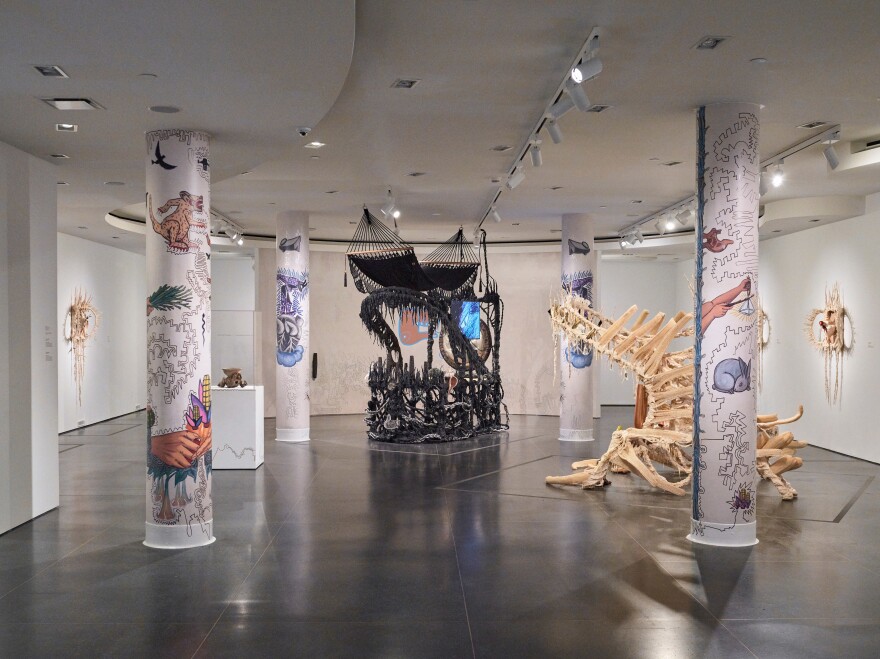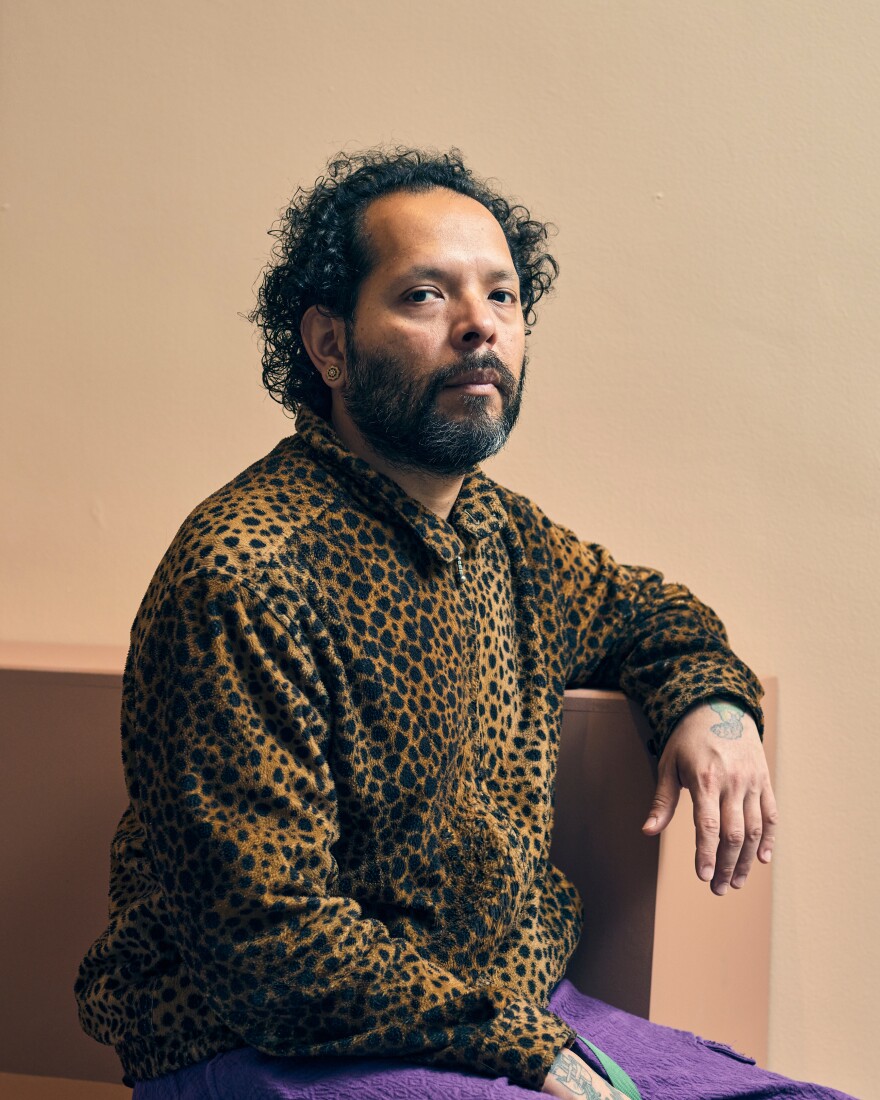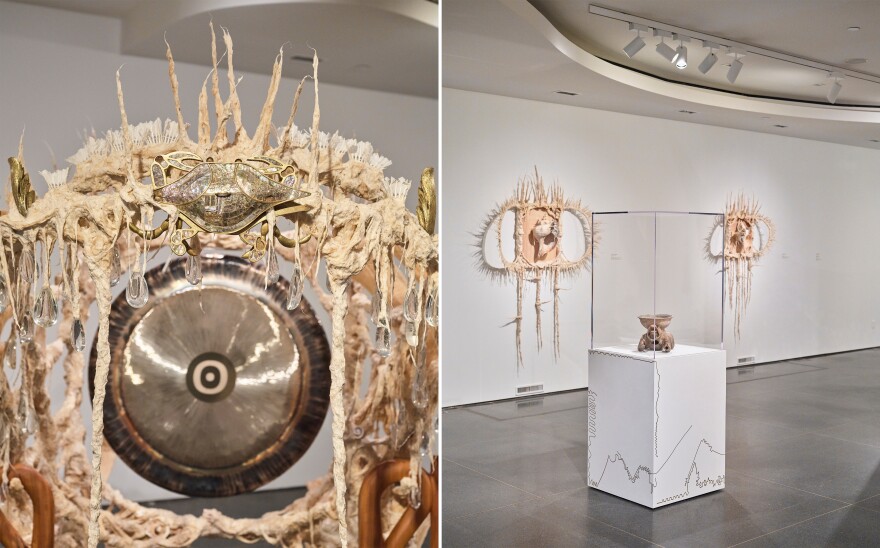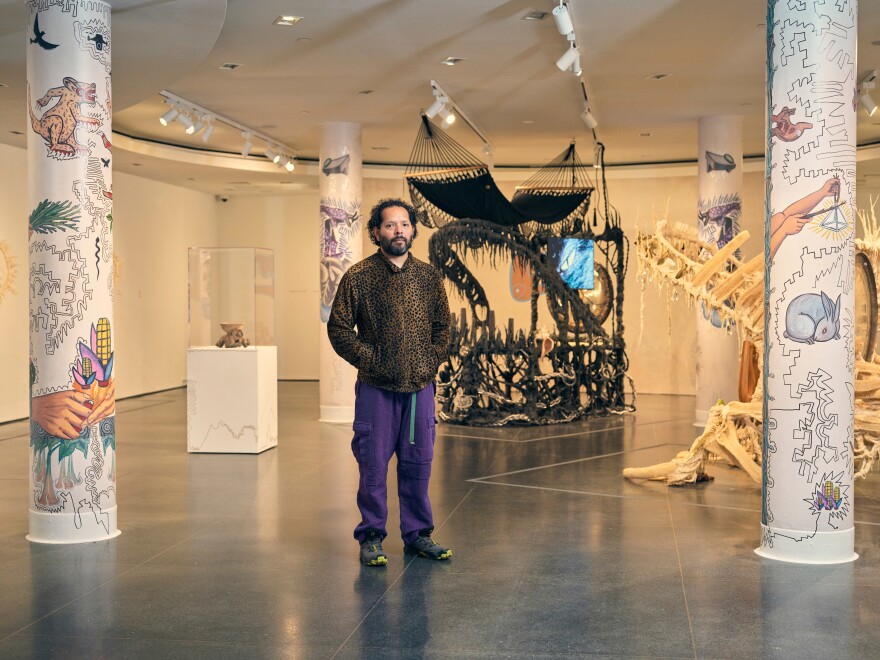It was terrifying, but there was so much beauty and magic.
That's how the artist Guadalupe Maravilla describes much of his life. And it could also be said for his work — looming sculptures and haunting sound art — exhibitions of which are currently being shown at the Museum of Modern Art and the Brooklyn Museum in New York.
That art is deeply influenced by his childhood in El Salvador throughout the '70s and '80s, when the country was being consumed by a bloody civil war. Despite the tumult, Maravilla remembers having great fun. He was the youngest in a Menudo cover band. "I guess I was the Ricky Martin," he laughs. He also learned to draw before he learned to speak, and would draw everything.


But little by little, the civil war stripped his family away. First, his father fled the country due to political persecution. Then, his mother left, followed by his grandmother. When he was 8, his family hired coyotes, who transport people across the border. They took him to the U.S. to reunite with his family.
Maravilla says that he's still astounded at an 8-year-old traveling alone with human smugglers, for over 2 months "from El Salvador, Guatemala, Honduras, all the way to Mexico. And eventually I made it to Tijuana. And eventually I crossed." He was one of many unaccompanied minors at the time who migrated from El Salvador to the United States, due to instability in their home country.
He says even that journey to the U.S. had its beauty. He drew a lot on the road in a notebook he's since lost. He would play a Salvadoran children's game called 'Tripa Chuca" with other migrants. Players draw lines on a paper that can never cross each other. The end result looks like a labyrinth, or an intestine (tripa).
This game has become a mainstay in Maravilla's art. As a ritual, before he opens an exhibit, he plays a giant match of Tripa Chuca with another immigrant. He says there's something therapeutic about it. "Confronting trauma", he explains, "when one is ready, is part of the healing process."
Maravilla's art is all about the trauma of displacement. At his new show at the Brooklyn Museum, there's video footage of his work with Central American undocumented minors at a detention center in upstate New York. He taught them how to make masks and led dance exercises. He says they remind him of the children he travelled to the U.S. with, who he never heard from again. "We were not allowed to exchange information."
His exhibition also includes a series of ancient Mayan sculptures that belong to the Brooklyn Museum. Maravilla decided to showcase them, he explains, because "these objects are displaced. They don't belong here, they belong in Central American museums." He says he's planning to have a cleansing ceremony led by a Central American shaman.
Also featured are his breath-taking sculptures, called "Disease Throwers": massive structures made of materials like, volcanic ash, and sea conches.

Maravilla often travels back to El Salvador and retraces the journey he made as a child, buying and gathering objects along the way. He points to a fake chicken, a rose and some corn made out of volcanic rock, all from Mexico.
The Disease Throwers look like mythological beings — and that's on purpose.
"I'm really influenced by Mayan mythology," Maravilla explains. "And if you think about it, their gods, their deities, they were very frightening looking. But in the end, they were the ancestors, the protectors."
Attached to the Disease Throwers are gongs which Maravilla pounds and scratches, making sounds that bring them, trembling, to life. It's eerie and stunning: The walls and floors vibrate, and museum-goers come to a halt.
Maravilla is perhaps best known for this work with sound and vibration, which he began exploring during his own health crisis. He says the trauma he experienced as a child had a major impact on his wellbeing: Years after arriving in the U.S., he developed a rare form of cancer. In addition to chemotherapy, he sought spiritual healers, shamans and the power of sound. "Sound as medicine is nothing new," he explains. "Tibetan throat singers, they use vibration to heal. The flutes, the singing of the shamans in South America, also use sound as medicine."
With his sculptures and other instruments, Maravilla creates "sound baths", in which people are exposed to a flood of sound. He spends a lot of time performing these rituals with undocumented communities and cancer patients.
At one of them — which I was allowed to attend but not record — people lay on the floor. The vibrations were completely overpowering. My body felt like it was levitating.
It was otherworldly.
Like much of Maravilla's life, and work, it was at times harrowing— but also breathtakingly beautiful.
Copyright 2023 NPR. To see more, visit https://www.npr.org.






